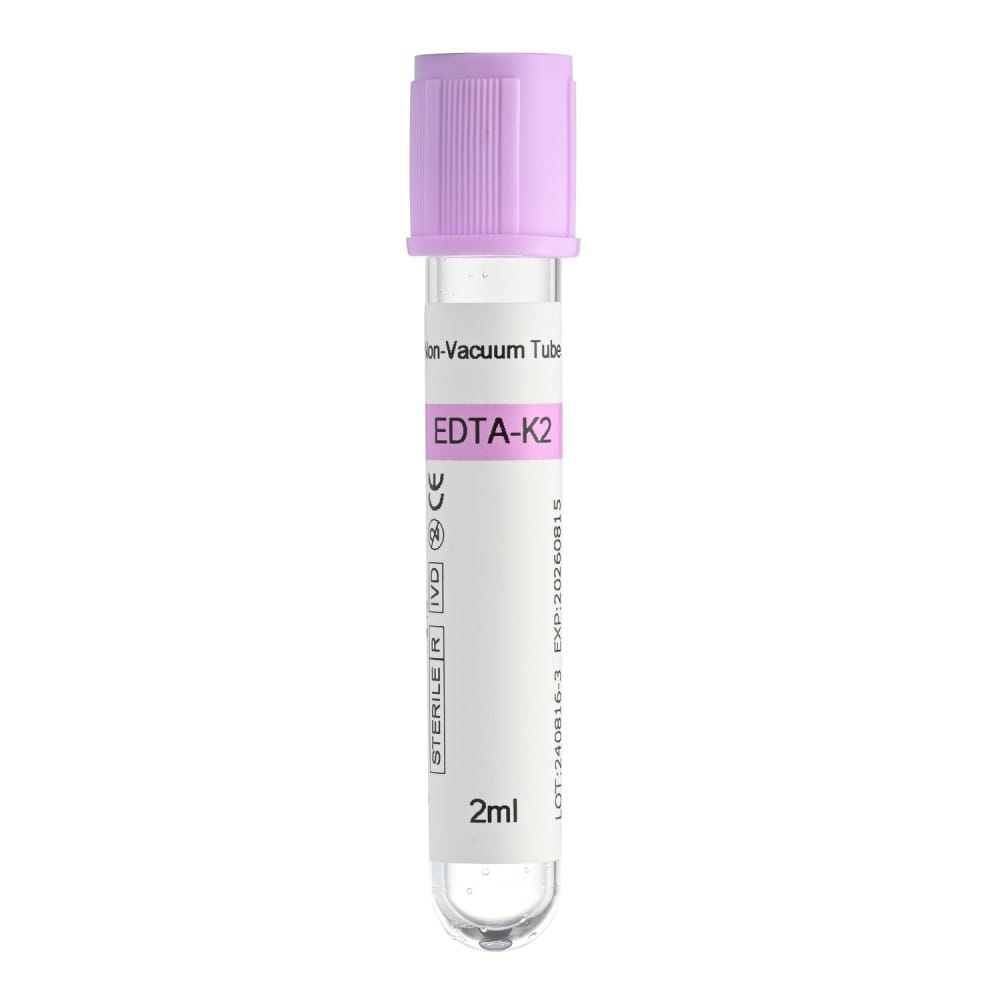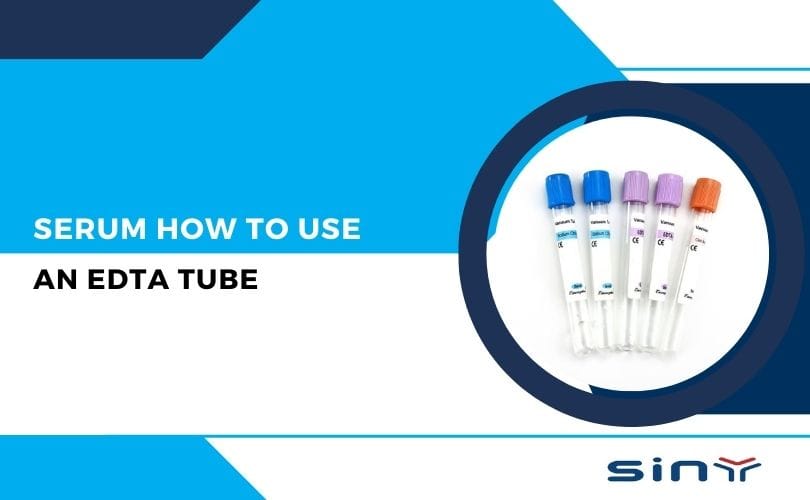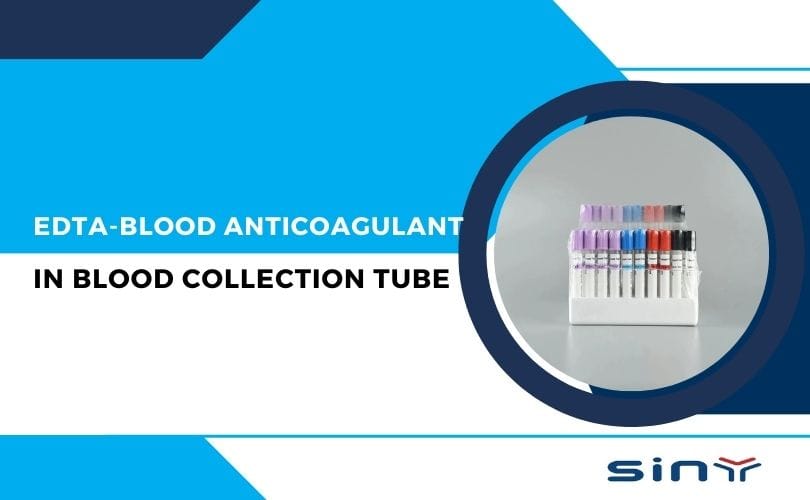When it comes to blood collection for laboratory testing, choosing the right type of tube is crucial for accurate results. Two common types used extensively in clinical and diagnostic labs are EDTA vacuum tubes and non-vacuum tubes. Although they serve the similar fundamental purpose of blood collection, they differ significantly in design, mechanism, usage, and benefits. This comprehensive blog aims to explain the difference between an EDTA vacuum tube and a non-vacuum tube in a detailed, research-backed manner that is easy to understand, helping healthcare professionals, lab technicians, and medical purchasers make well-informed decisions.
For premium quality EDTA tubes suitable for various blood collection needs, visit EDTATube.com.
EDTA Tubes: What is EDTA and Why It Is Used?
Before diving into the differences, it’s essential to know what EDTA refers to in blood collection tubes. EDTA stands for Ethylenediaminetetraacetic acid, which is a potent anticoagulant that chelates calcium ions in blood, preventing clotting during sample collection.

EDTA tubes are widely used for hematology tests (like CBC), molecular diagnostics, and immunohematology because they preserve blood cells and maintain sample integrity. For deeper knowledge on how EDTA works inside the tube, check How Does EDTA Work.
What is a Vacuum Tube?
An EDTA vacuum tube is a blood collection container pre-evacuated (air removed) to create a vacuum inside the tube. This vacuum creates negative pressure which helps draw a precise volume of blood directly from the patient’s vein through a needle or catheter into the tube without the need for manual suction.
These tubes are typically made of plastic or glass and contain specific additives (like EDTA powder or spray-dried forms) inside to maintain anticoagulant effect. The vacuum tubes are color-coded for different additives and intended tests; purple caps commonly denote EDTA.
Explore a variety of top-rated EDTA vacuum blood collection tubes here: EDTA K2 Gel Vacuum Blood Collection Tube and Purple Cap Vacuum Blood Collection PET Glass EDTA K2/K3 Tube.
What is a Non-Vacuum Tube?
In contrast, non-vacuum tubes are simple blood collection tubes without evacuated pressure. They lack a vacuum inside, so blood is collected manually by using a syringe or pipette and then transferred into the tube.
Non-vacuum tubes might or might not contain anticoagulants depending on the test requirement. In many cases, they rely entirely on manual handling for sample volume accuracy. These tubes are generally used in settings where vacuum tubes are not accessible or when small volume samples are needed.
Structural and Functional Differences Between Vacuum and Non-Vacuum Tubes
| Feature | EDTA Vacuum Tube | Non-Vacuum Tube |
|---|---|---|
| Mechanism of Blood Collection | Uses vacuum pressure to automatically draw blood | Requires manual blood withdrawal and transfer |
| Additive Containment | Contains pre-added EDTA inside tube | May or may not contain additives, usually manual addition if needed |
| Volume Accuracy | Precise volume collection due to vacuum pressure | Volume depends on manual control, less precise |
| Ease of Use | More user-friendly, faster, reduces contamination | Requires more skill and effort to avoid errors |
| Sample Integrity | Better preservation and reduced hemolysis | Higher risk of clotting or contamination |
| Material | Usually plastic or glass with standardized additives | Often glass or plastic, variable quality |
| Cost | Generally costlier due to processing and vacuum | Lower manufacturing cost, but higher labor cost |
| Clinical Performance | Preferred for routine clinical hematology tests | Limited application, usually for niche uses |
A detailed product comparison and selection guide are available at EDTATube’s product section: EDTA Tubes for Blood Collection.
Why Choose EDTA Vacuum Tubes for Blood Collection?
The vacuum technology in EDTA tubes has revolutionized phlebotomy by delivering standardized blood sample volumes quickly and safely. This reduces contamination risk, improves patient comfort, and supports quick processing.
The sealed, sterile design prevents environmental exposure and sample degradation. With EDTA anticoagulant inside, the samples are well-preserved for hematology and molecular diagnostics.
Specific vacuum tubes are developed for specialized tests such as HbA1c measurement with EDTA additive, available here.
When Are Non-Vacuum Tubes Preferred?
Non-vacuum tubes have niche uses such as:
Blood collection in low-resource settings without access to vacuum systems
Small-volume collections like micro-sampling or neonatal tests
When specialized handling or manual mixing is required
Situations demanding alternative anticoagulants or no additives at all
Still, non-vacuum tubes require more care and experienced handling to avoid errors and sample damage.
Material Differences and Their Impact
EDTA tubes come in different materials — mainly glass or PET plastic. Glass offers excellent chemical resistance but is fragile, while PET plastic offers durability and safety with ISO-certified quality.
Visit Purple Cap Vacuum Blood Collection PET Glass EDTA K2/K3 Tube with ISO13485 for details on premium PET glass tubes.
Handling and Storage Differences
Both vacuum and non-vacuum tubes need gentle inversion after collection to mix blood with EDTA properly. Vacuum tubes often have standardized protocols for transport and storage to preserve blood integrity for extended times.
Non-vacuum tubes, without sealed systems, may be more prone to exposure and sample degradation unless handled carefully.
Common Applications by Tube Type and Additive Configuration
EDTA vacuum tubes are extensively used in:
Complete Blood Counts (CBC)
HbA1c tests
Blood typing and crossmatching
Molecular diagnostics and DNA/RNA assays
Non-vacuum tubes are mostly reserved for:
Manual blood culture setups
Specialty molecular assays requiring manual additive control
Situations requiring direct manual transfer to other containers
More on specialty tubes is available at Lavender Top EDTA K3 Vacuum Blood Collection Tubes.
Potential Issues and Limitations of Each Tube Type
EDTA Vacuum Tubes may occasionally cause:
Hemolysis if evacuated too forcefully
Incorrect additive volume due to manufacturing defects
Non-Vacuum Tubes may risk:
Sample contamination during transfer
Variable blood volume accuracy
Increased clotting risk without anticoagulant properly mixed
For manufacturer reliability, check Siny Medical EDTA Tube Details.
How to Choose the Right Tube: Decision Criteria
Choosing the right tube depends on several factors:
Clinical test requirements and volume needed
Phlebotomy equipment and expertise available
Cost and supply chain considerations
Patient comfort and safety standards
Speed and automation of sample processing in the lab
More insights on company background and product quality are on EDTATube About Us.
Conclusion
While both tubes serve the critical role of blood collection, EDTA vacuum tubes stand out for their standardization, safety, and widespread clinical acceptance. Non-vacuum tubes fill specific, less frequent roles requiring manual handling or specialty sampling.
For most clinical applications, the EDTA vacuum tube is the preferred choice due to automated sample collection, contamination reduction, and consistency. Laboratories and healthcare providers should select tubes based on patient needs, test types, and operational workflow.
Visit EDTATube.com for sourcing quality, precision-engineered EDTA vacuum tubes tailored to diverse clinical applications.
FAQs
What is the main functional difference between vacuum and non-vacuum tubes?
Vacuum tubes use negative pressure to draw a set volume of blood automatically, while non-vacuum tubes require manual collection and transfer of blood.
Are EDTA vacuum tubes more reliable for routine hematology testing?
Yes, due to their standardized volume and internal anticoagulant, EDTA vacuum tubes provide more consistent and reliable samples.
Can non-vacuum tubes be used for the same tests as vacuum tubes?
Sometimes yes, but non-vacuum tubes generally have more limited uses and require careful manual handling.
Do all vacuum tubes contain EDTA?
No, vacuum tubes contain different additives depending on test needs; only purple-capped tubes specifically contain EDTA.
How do I store EDTA tubes after blood collection?
Tubes should be gently inverted several times and stored at recommended temperatures, typically 2-8°C for short term.
Where can I purchase high-quality EDTA vacuum tubes?
Reliable suppliers such as EDTATube.com offer ISO and CE certified tubes with excellent quality assurance.
For detailed product browsing and ordering, visit EDTA Tubes for Blood Collection or connect directly via Contact Us.
For more educational videos on blood collection tubes, see Siny Medical YouTube Channel and their Made in China store.






